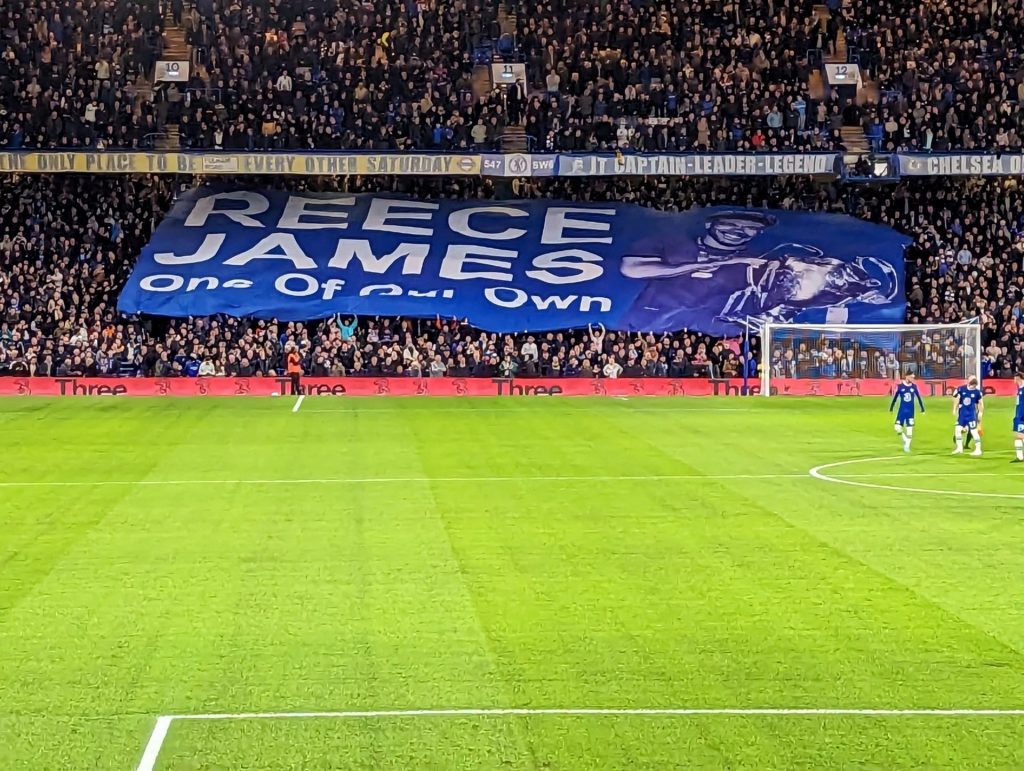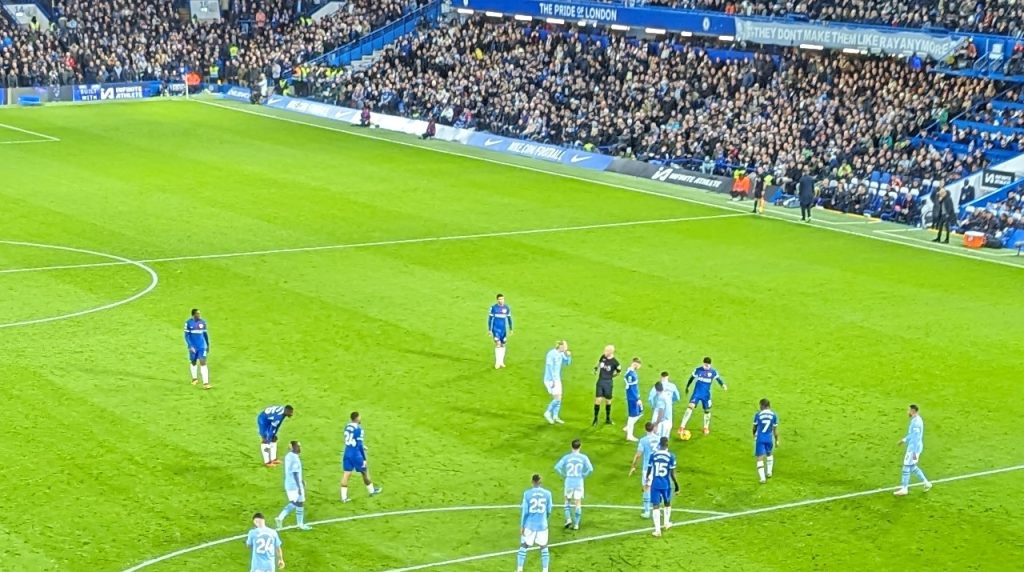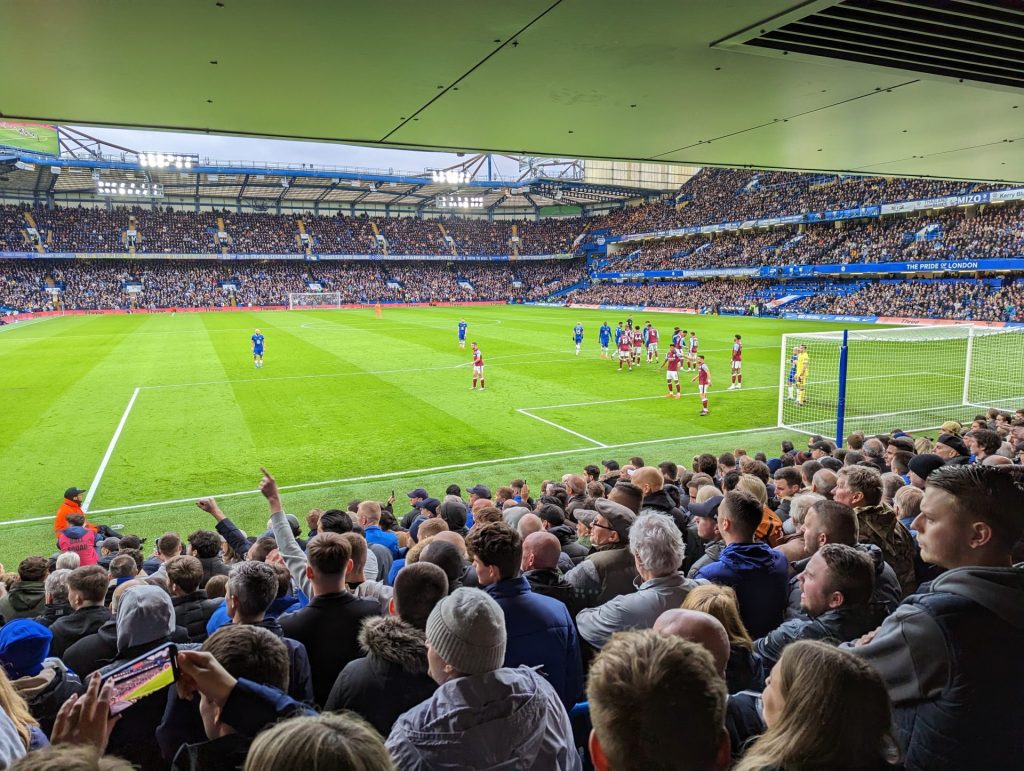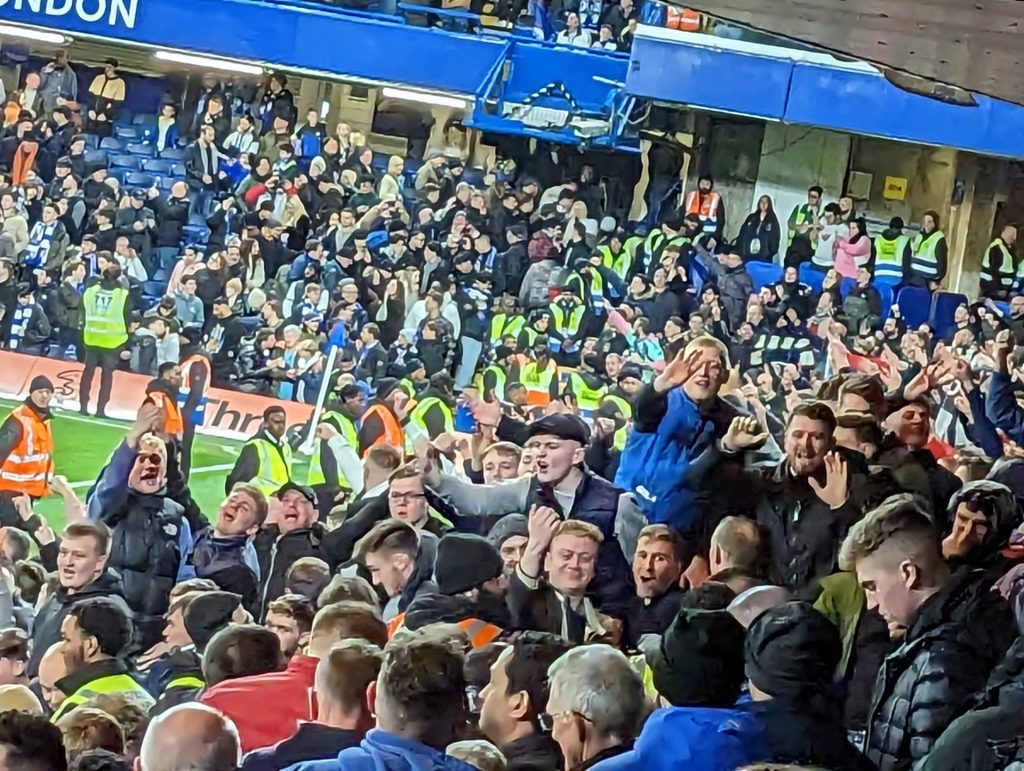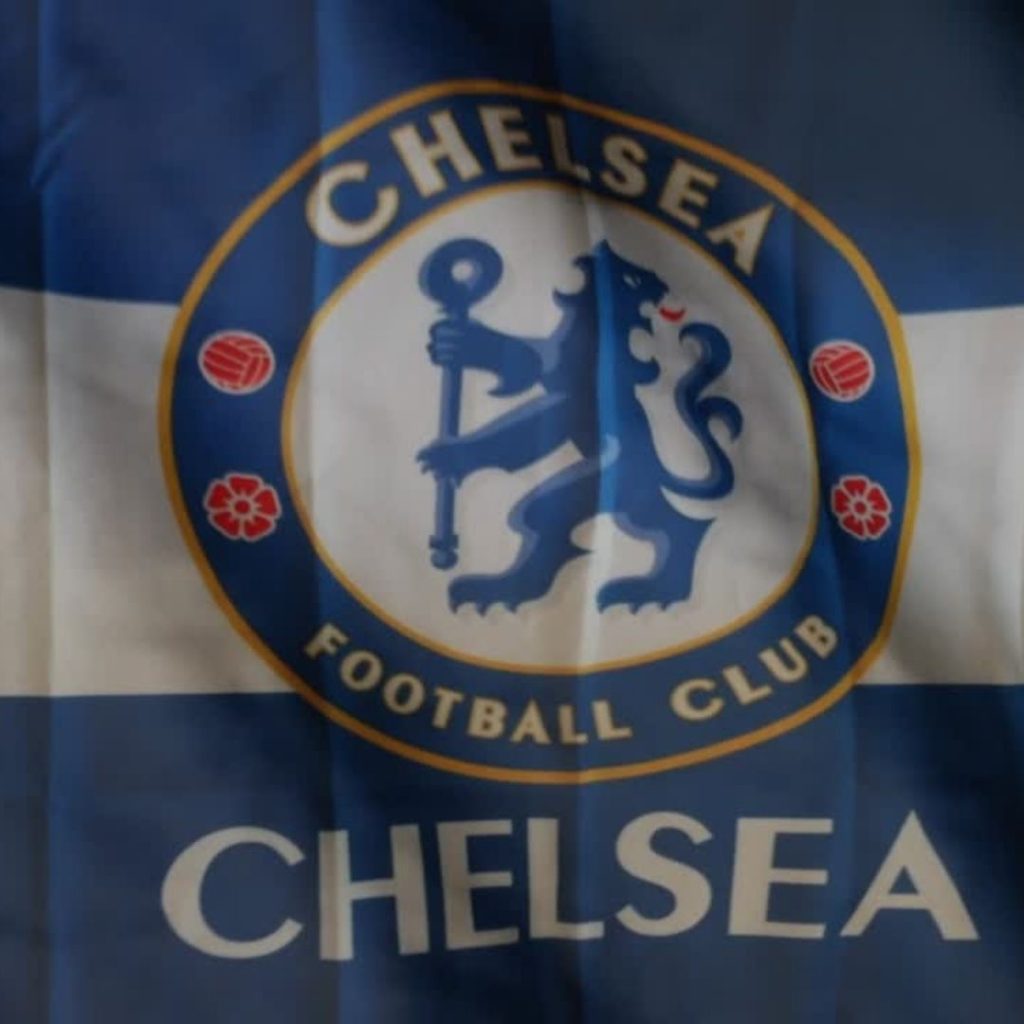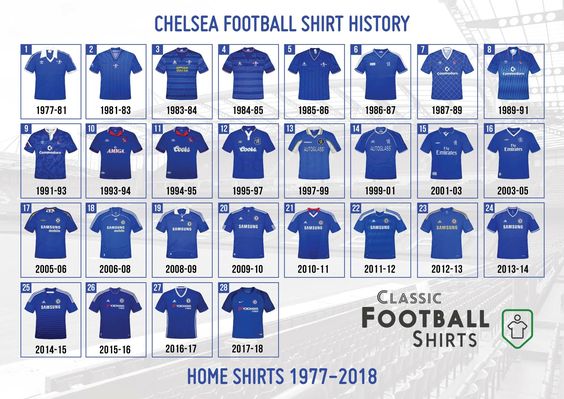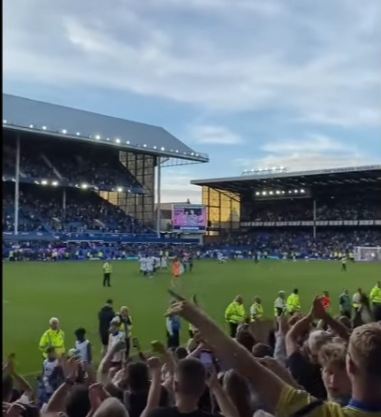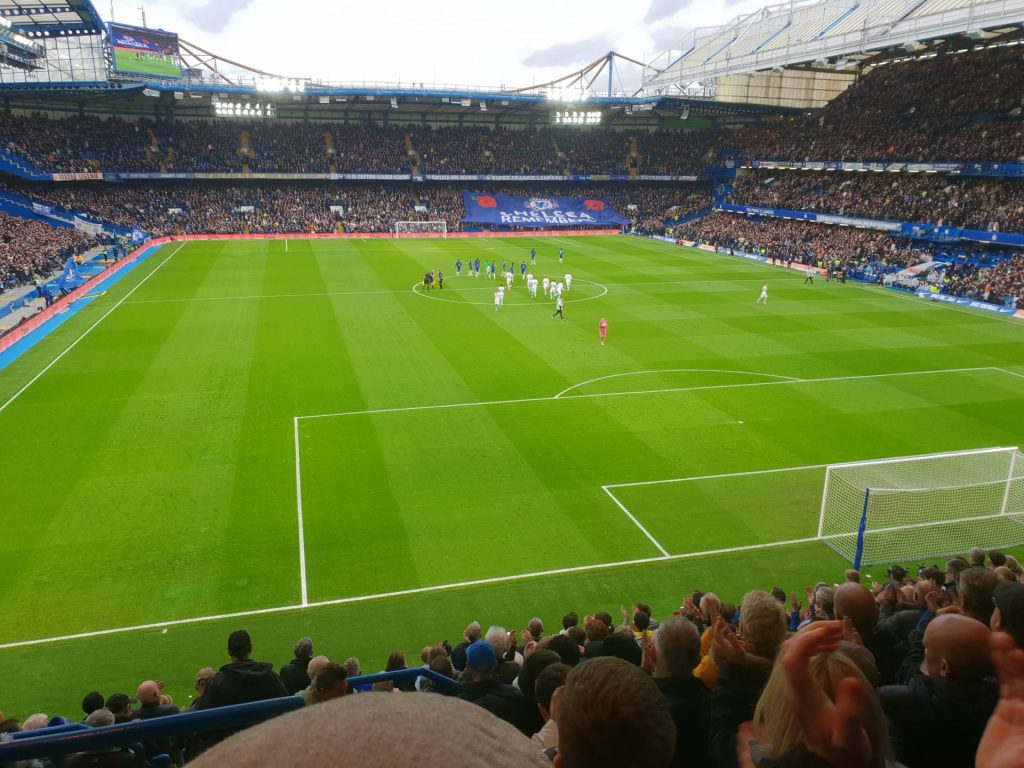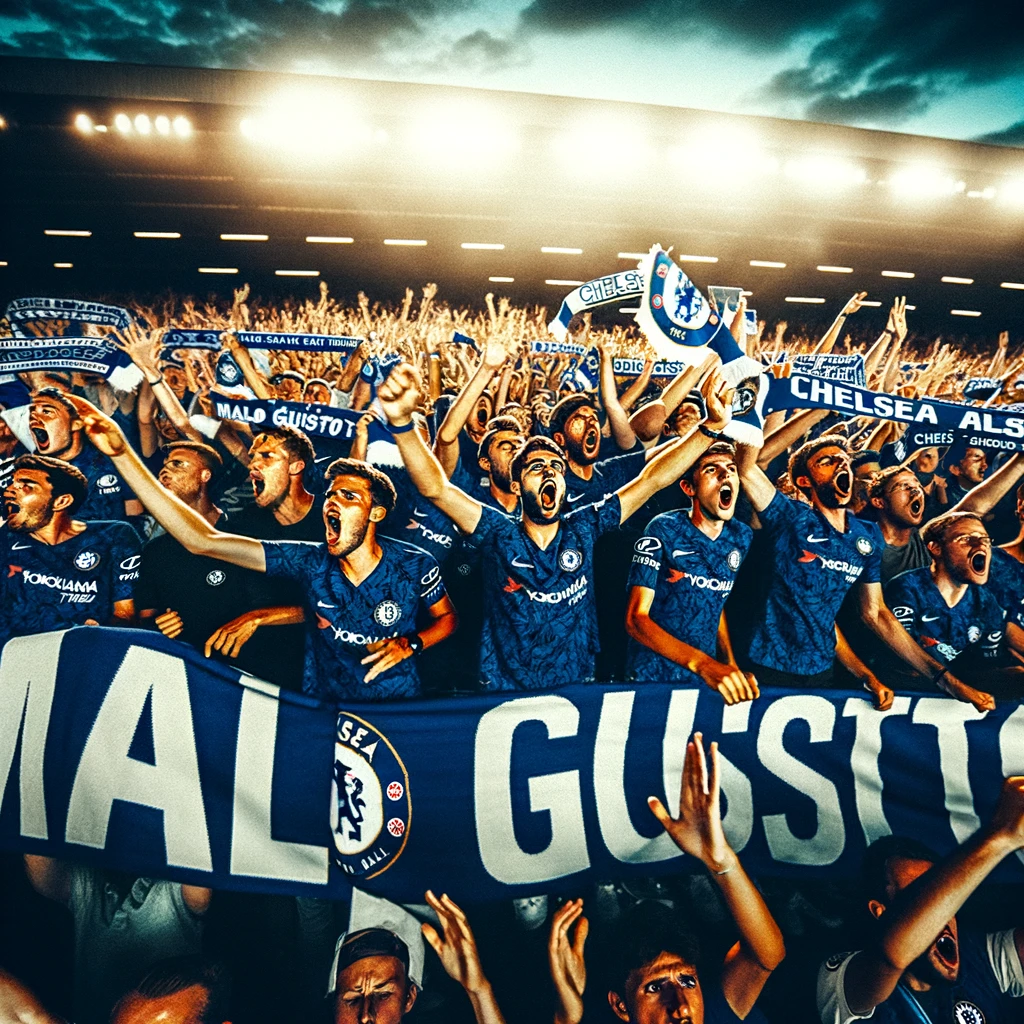
Chelsea fans started a Malo Gusto chant for the first time during Chelsea’s 2-2 draw against Brentford.
It wasn’t just the goals from Nicolas Jackson and Axel Disasi that captured the attention of the Blues’ supporters. Instead, it was the performance of right-back Malo Gusto that resonated with the fans at the Gtech Community Stadium. For the first time, the name “Malo Gusto” was chanted by the away supporters, a simple yet significant gesture of appreciation for the player’s outstanding display on the field.
Key Contribution
Malo Gusto played a pivotal role in Chelsea’s performance against Brentford, particularly notable for his brilliant cross that set up Jackson’s goal. Paul Merson described the assist as “unbelievable.” It is his excellent displays in an underperforming team that has led to the Chelsea fans chanting his name, acknowledging Gusto’s contribution to the team.
The Match Overview
Chelsea managed to secure a draw in a match that saw them initially take the lead through the efforts of Gusto and Jackson. However, Brentford mounted a comeback in the second half, with goals from Mads Roerslev and Yoane Wissa briefly putting the Bees ahead. It was Axel Disasi’s late header that ultimately helped Chelsea salvage a point from the encounter.
Gusto’s Growing Impact
The recognition from the fans comes at a time when Malo Gusto is increasingly proving to be an essential player for Mauricio Pochettino’s Chelsea. His recent performances have been marked by a high level of consistency and quality, demonstrating both defensive prowess and offensive creativity. The chants from the Chelsea supporters are a nod to his excellent form and growing influence within the squad.
Conclusion
The chants for Malo Gusto by the Chelsea fans are a straightforward yet profound acknowledgment of the young player’s contributions and rising stature within the team. It reflects the connection between the players and the supporters, where moments of individual brilliance are celebrated collectively.
